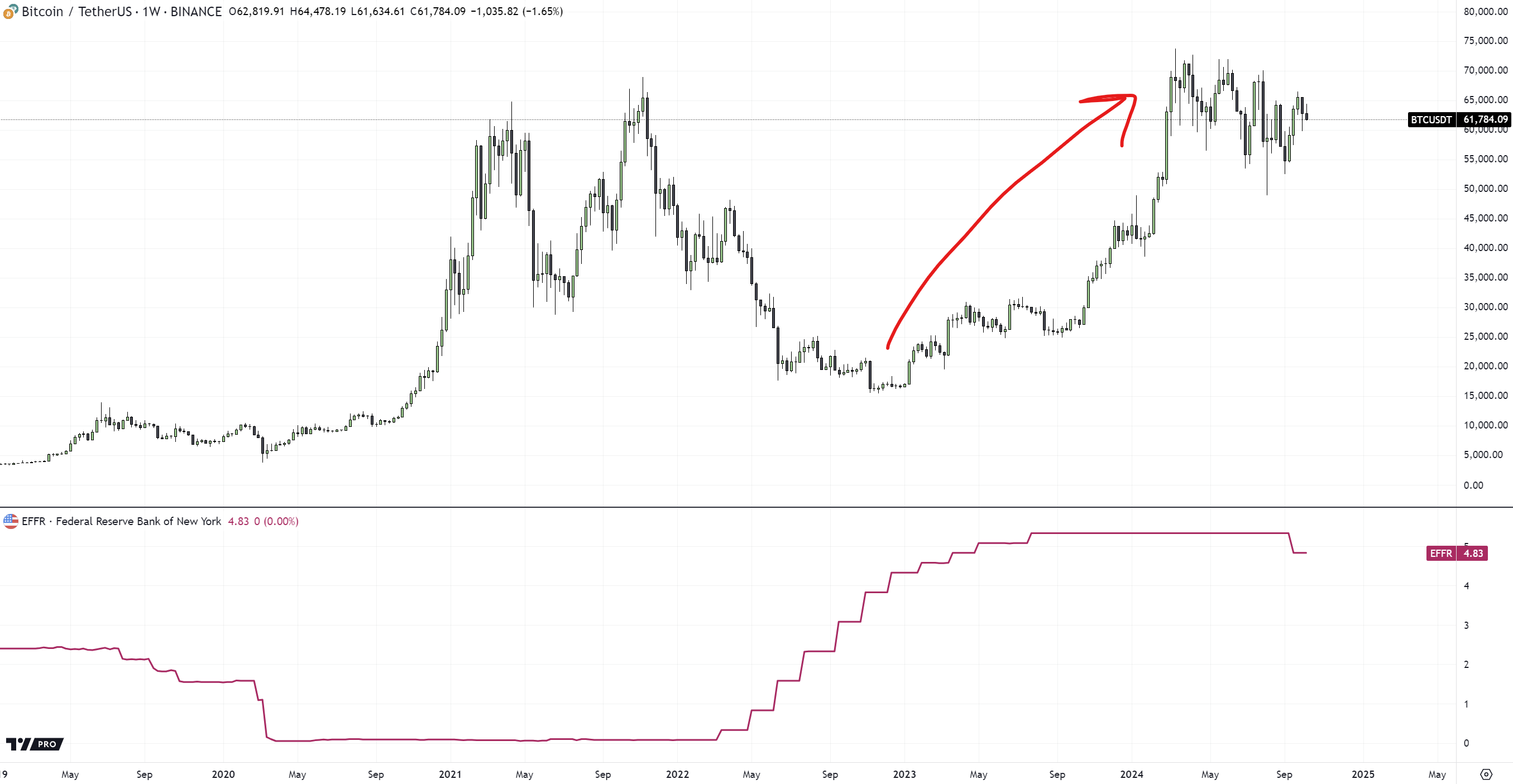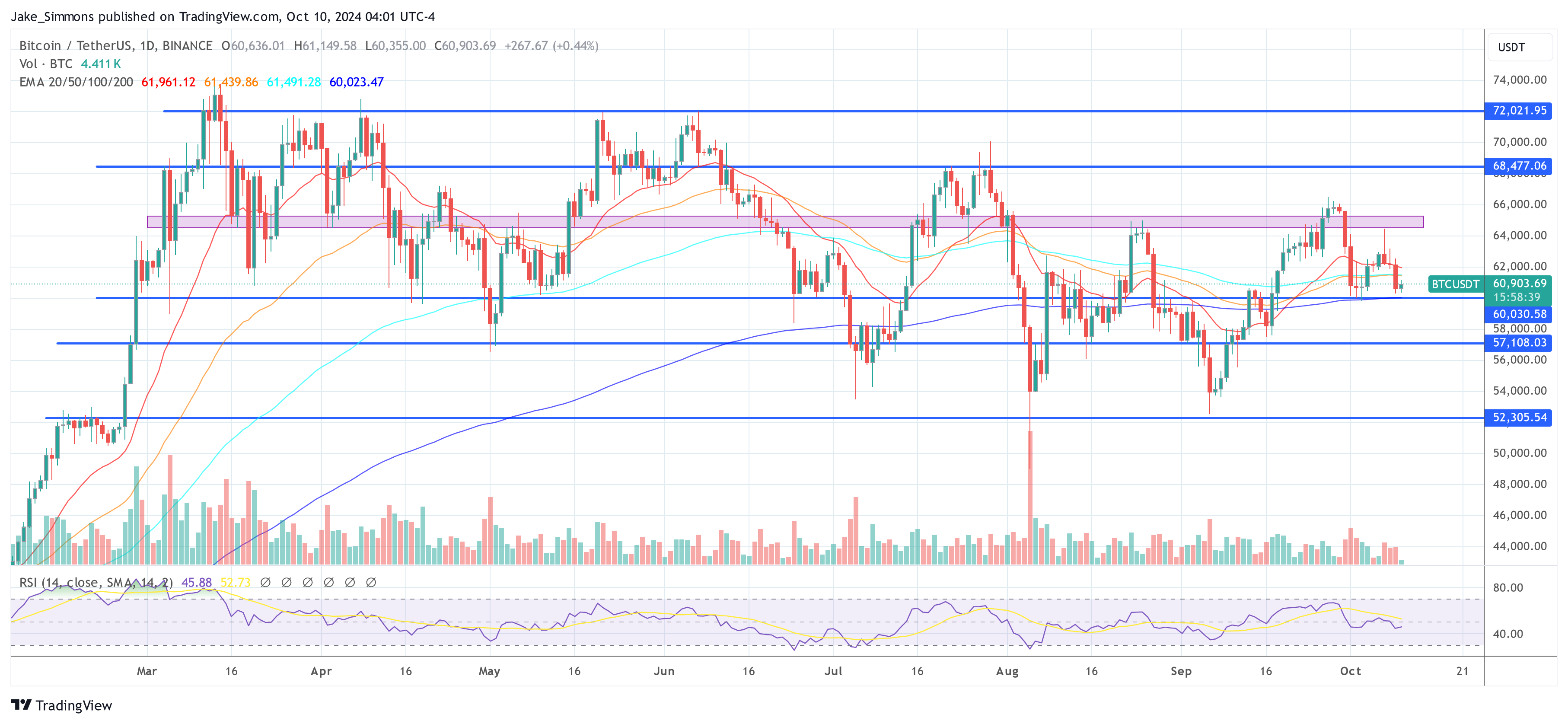This article is available in Spanish.
The Bitcoin price stagnation despite the first interest rate cut by the US Federal Reserve since 2020 has stunned many investors and traders in the market. In a new post on
Why is Bitcoin stagnant?
Kang challenges the prevailing market view that interest rate cuts by the Federal Reserve will significantly increase Bitcoin and cryptocurrency prices. “Fed rates are just one of the factors impacting global liquidity, and global liquidity itself is just one of the factors impacting crypto prices,” he stated. Kang believes it is “nonsensical to see BTC rising 4.5x during a period when interest rates are hitting multi-decade highs – with little correlation between interest rates and BTC – and then expect there to be a strong inverse correlation.” arise once interest rates start to fall. down.”
Related reading
He acknowledges that some argue that future interest rate changes are already priced into the market, but argues that this logic should apply to rate increases as well as rate cuts. “This is not to say that rates are not important, but rather that they are widely considered by most market participants,” Kang added. He notes that equities are more strongly linked to interest rates, due to factors such as discount rates used in valuing cash flows and mature corporate bond markets used to finance growth.

Commenting on China’s recent economic stimulus, Kang notes that its impact on Bitcoin and crypto is even less significant than many think. “It is not surprising to see that the people who extrapolate the Chinese stimulus measures as extremely bullish on crypto are mainly non-Chinese,” he noted. According to Kang, those in China have noticed a shift from crypto investments to A-shares in the stock market.
Backing up his claim with data, Kang noted: “Since the Chinese stimulus announcement, USDT has traded at a discount to the CNY. Still at 3% as of recently.” This signals reduced demand for China’s leading stablecoin Tether (USDT), in line with a move towards traditional equities.
Despite his criticism, Kang clarifies that he is not bearish on Bitcoin. “I just think some people have gone over their skis a little bit,” he noted. Kang expects Bitcoin to trade within a range of $50,000 to $72,000 until a major new catalyst emerges.
Related reading
However, he remains optimistic about the opportunities within the market, stating: “The constant rotation of capital and new projects being developed means that coins can still be purchased to generate bull-like returns.” Nevertheless, Kang warns of potential volatility from leveraged positions: “The market will still be susceptible to smaller corrections if leverage becomes too high (currently quite high).”
Working with the community, Kang agreed, replying, “That’s exactly my point. Interest rates are only a small piece of the puzzle. While they were negative for BTC, other factors such as the ETF could drive the BTC price higher. Other factors could drive it higher or lower here. Because of the interest rate cuts alone, we cannot guarantee infinite prices.”
Echoing this sentiment, crypto analyst Astronomer (@astronomer_zero) commented: “I believe interest rates (and interest rate inversion) have only a negligible impact on price. Rather, they are a holistic measure that is important to bond market players. But the zero effect on shares or crypto has already been proven.”
Another analyst, Res (@resdegen), marked the correlation between Bitcoin and the money supply: “BTC is more correlated with the supply of money than with interest rates. It started to rise as the RRP fell, resulting in net positive liquidity regardless of interest rates, which were indeed close to the top.”
At the time of writing, BTC was trading at $60,903.

Featured image created with DALL.E, chart from TradingView.com













